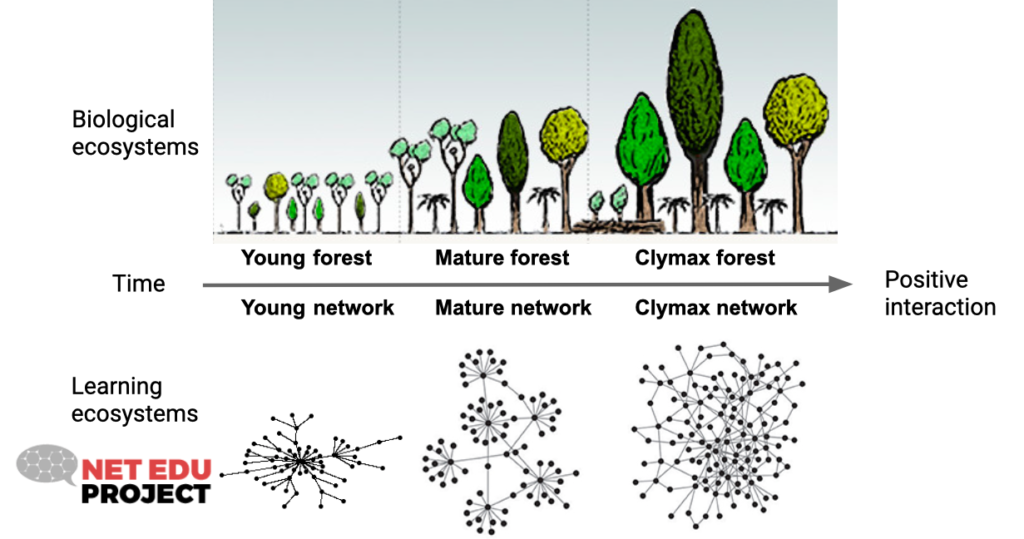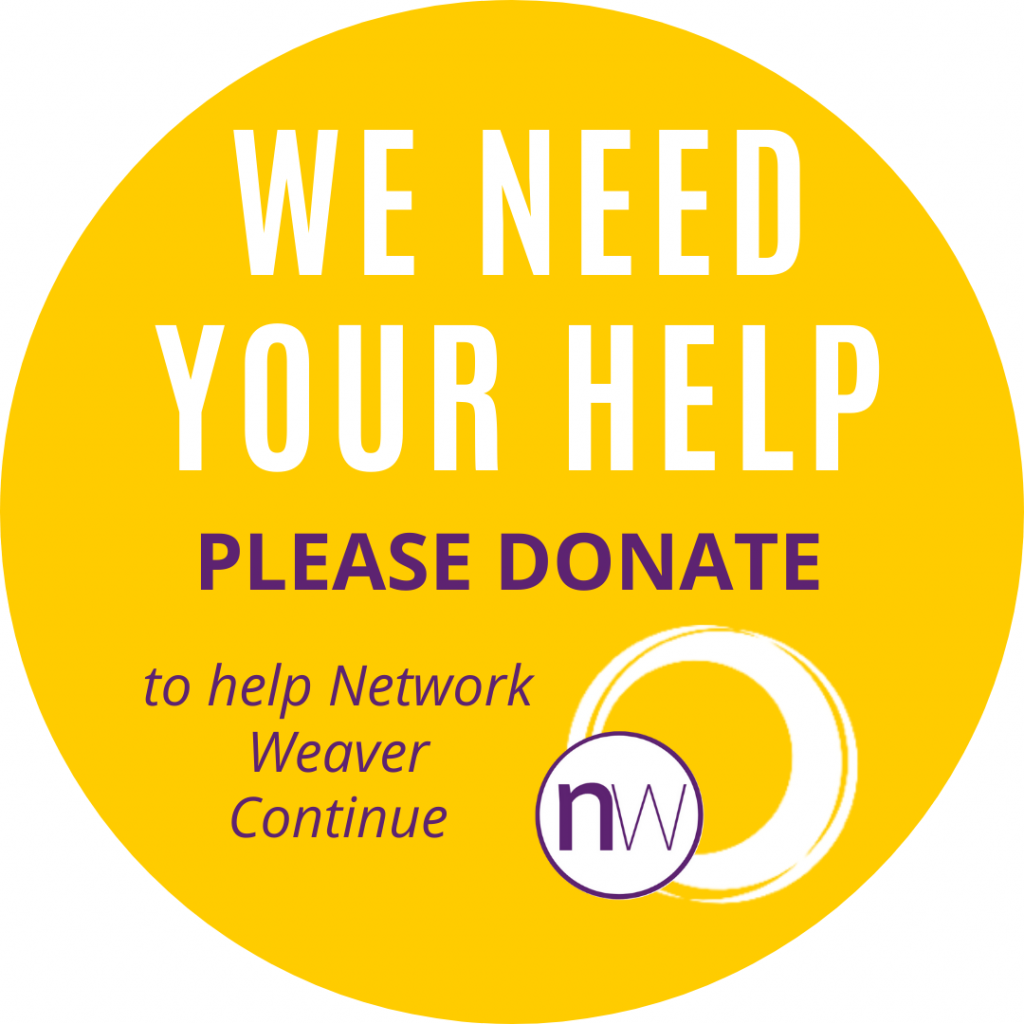Weaving educational ecosystems in our districts and cities has become one of the greatest worldwide challenges for our systems to enhance learning and equity for the new era. The UNESCO (2020) publication “Education in a Post-COVID World: Nine Ideas for Public Action” indicates that those communities that have responded in an innovative, effective and resilient way to the crisis of COVID-19 are those who had shown greater collaboration between teachers, and between school and community actors. These ideas are also shown by other recent studies on school networks by Daly (2020) Azorín (2020) and Ion & Brown (2020). The reality of this pandemic has reminded us as a species that we are deeply connected to one another (Lancet 2020).
Learning ecosystems are social infrastructure formed by diverse actors that share a purpose, and engage in collaboration to co-design and co-implement innovative responses to existing social and educational challenges. Learning ecosystems provide a new understanding of education from an ecosystemic perspective of actors and their relationships; they challenge traditional organizational boundaries while providing place-based focus on local schools, neighborhoods, cities, or transnational networks; they are based on systemic and cross-sectorial collaboration; and pursue systemic impact (Díaz-Gibson et al., 2020). Thus, one of the most relevant questions in the global educational sphere is how learning ecosystems can be intentionally supported, cultivated and weaved, and how these place based ecosystems grow and evolve over time.
A natural way to approach and better understand learning ecosystems’ development and growth process is to dig into how biological ecosystems change and evolve. Science shows us that collaboration between organisms and species, not struggle for survival that allows ecosystems to evolve and species to truly flourish. As Darwin defended, if humans are the most advanced species it’s because we have the most advanced means of collaborating, and our communities care for the most vulnerable, the sick, the elderly and impoverished. Thus, collaboration is actually a natural and social driver for species survival and for thriving communities.
Ecosystems evolution is drawn byecological succession, understood as the process of change in the species structure of an ecological community over time, where a network of different populations and organisms coexist and interact. The time scale for a biological ecosystem to evolve can be decades -for example, after a wildfire-, or even millions of years. The community begins with relatively few pioneering plants and animals and develops through increasing complexity until it becomes stable or self-perpetuating as a climax community. The engine of succession becomes the impact of established organisms upon their own environments. In other words, intraction among species and within the environment are the drivers of change in all ecosystems.
Colleagues in the NetEduProject have been studying networks, partnerships and ecosystems that enhance learning and equity in the last two decades (Daly, 2010; Riera and Civís, 2008; Díaz-Gibson, 2014; Díaz-Gibson et al, 2017 and 2020). Our learnings show that the development of learning ecosystems and their relational networks become a taugh and complex process that needs time and efforts to be properly cultivated, weaved, and consolidated. Personal relationships require time and intention to emerge and sustain, and their growth involves devoting intentional efforts. With this in mind, Mireia Civís and I have worked on a model to cultivate and weave learning ecosystems in three non linear steps, where we identified some patterns of evolution. Thus, to weave learning ecosystems we need to focus on different conditions depending on its level of maturity:

- The initial stage of the ecosystem’s growth is shown in the image as ‘Young network’. Following the idea of ecological succession, ecosystems change depends on the initial conditions found in the social network, and the type and number of actors, and the quantity and quality of relationships draw an initial starting point. At this stage, it is necessary to develop a structural design to cultivate the social foundations that will sustain the whole ecosystem: trust, empathy, recognition of others and collective purpose. It is the moment where members share goals and expectations, adjust rhythms and levels as new relationships are woven. This social capital will sustain the future development of the whole ecosystem of people and organizations, and will become the pillars that pave the way for a new collaborative culture. At this point, collective learning is a priority flow that needs to be planned, at the same time, will be part of the network’s own working culture. Ecosystems can take from one to three years to move into a second stage, and only the construction of solid intangible pillars will allow networks to change and evolve.
- The second stage, named as ‘Mature network’, is more difficult to limit in time as its duration depends on several factors beyond the initial network conditions, such as investment, political support or system coherence. Here, we need to move towards the development and sustainability of social networks, and one of the aims is to consolidate the transition from individual to institutional commitment. It becomes a stage where we want to sustain a collaborative model of action and where we must continue to feed the social intangibles generated. At the same time, new strategies are being sought to assess and increase the impact of collective action. Once networks are weaved, they must come to live and make sense for themselves, they may not depend (or only depend) on external leadership. Also, at this point they must generate clear benefits for their participants according to the established objectives. The design and the structures need to be flexible and readjust to optimize resources to respond to needs and expectations of the people and organizations involved, also drawing clarity on paths for local based outcomes to emerge.
- Finally, the third stage named as ‘Climax network’, is also imprecise in time for the same reasons. In this stage, the ecosystem creates intentional infrastructures for its sustainability beyond personal relationships, establishing institutional agreements, coordination documents, new opportunities for participation, among others. These strategies are aimed to facilitate interaction and self governed initiatives within the network. Here the ecosystem acquires an optimal level of maturity that is evidenced by consolidation of a new culture, where new rules and new ways of doing are practiced in professional and institutional levels. The network organization within the ecosystem in this stage tends to be characterized by a collaborative governance. People are empowered to open new cycles of revision and regeneration in order to create new meaning and new opportunities for individuals and for the collective.
We believe these three fluid and organic steps can inform the type of systemic support needed in the evolution of ecosystems to enhance social capital, learning and equity in our communities and cities across the globe. In the NetEduProject we are ‘hands on’ working on learning and sharing new leadership strategies that can move these social and participatory structures forward over time. As shared in the beginning of this post, science has shown that collaboration is a natural driver for species survival. In this new era we are all embracing, humans and social systems really need to improve our collaborative competences to better take care of one another and create a thriving world for all.
originally published at NET EDU PROJECT
I am a 24-hour learner, passionate collaborator and weaver. Interested in weaving between contexts, disciplines, research and practice to enhance collective impact. I believe that education is a tremendous weapon to change the world.
PLEASE DONATE to help Network Weaver continue in it’s mission to offer free support and resources to networks worldwide.

